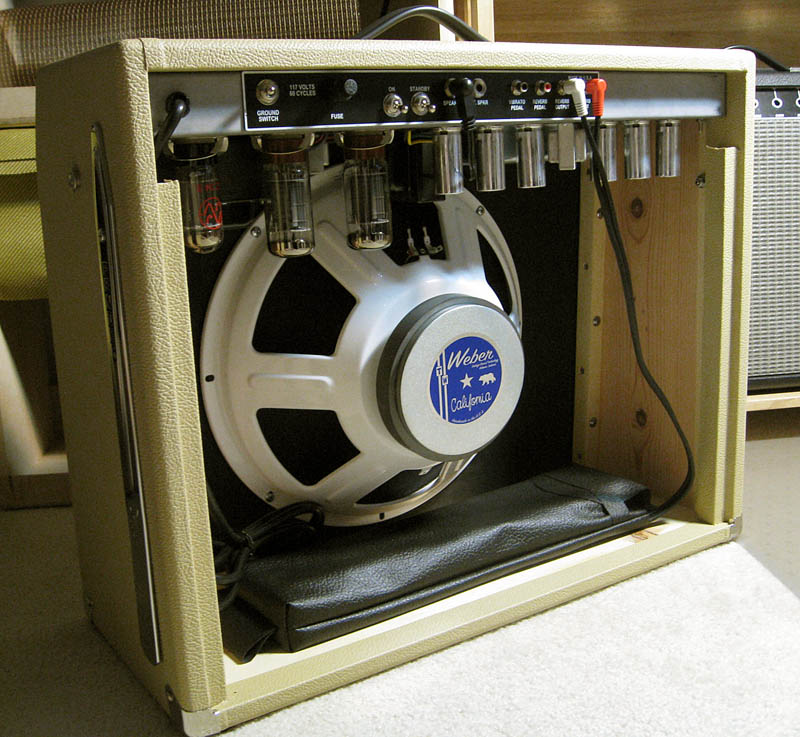Intro
An amplifier increases the power of a signal. The main goal is to make the output signal stronger than the input signal. Amplifiers can be used in many different cases but this article will focus on amplification of sound.
Amplifier types
An amplifier changes the input in some way to make the output stronger. This is called gain. Gain does not have an unit but is often expressed in decibels. Gain can be also be multiplication factor in the magnitude of the output signal relative to the input signal.
There are 4 types of amplifiers:
Voltage amplifier
The input voltage is amplified. The input impedance is high and output impedance is low.
Voltage amplifier
Current amplifier
The input current is amplified, The input impedance is low and output impedance is high.
Trancoductance amplifier
The output current changes relative to input voltage.
Transesitance amplifier
The output voltage changes relative to input current.
Preamplifier
In sound amplification there are usually 2 amplifiers involved: the preamplifier and the power amplifier. Preamplifiers job is to reduce effects of noise and interference. The signal is then sent to a power amplifier. In musical equipment preamps often have also equalization, tone controls and distortion effects. A preamplifier is usually a voltage amplifier.
Power amplifiers
Power amplifiers are used to amplify the signal to drive a loudspeaker. It is usually the last thing in the signal chain. Power amplifiers are usually current amplifiers, the input may be hundreds of microwatts and output can be something between tens or tens of thousands of watts.
There are number of different power amplifier circuits. They are used in different applications. Classes A, B, AB and C are analog design. They are so called linear gain devices. Then there are Classes D to H all of which work in different methods.
Analog design amplifiers use the input wave cycle or a part of it to amplify the signal. As the name states the signal stays analog the whole time. Class A amplifiers use the full cycle and are very inefficient. Class B amplifiers use half of the cycle and are more efficient but create more distortion in the signal. Class AB is a compromise between A and B.
Class D amplifiers convert the analog signal to a stream of pulses. The pulses represent the signal as a modulation (this can be done in different way, pulse width, pulse density, delta-sigma or other modulation technique) The amplification is applied to the modulation and then the modulation is converted back to an analog signal using a passive low-pass filter.
Valve vs solid-state in musical equipment
In musical equipment there are mainly two methods of amplification used vacuum tube (or valve) or solid-state. In terms of sound quality both are capable of producing great sound and it is down to preference what equipment a musician chooses to use.
Valve amplifiers use usually both valve driven preamplifier and power amplifier. (Sometimes the preamp may be switched to a solid-state amplifier. Those are called hybrid amplifiers.) A valve amplifier uses typically a class A power amplifier. This means it that amplifiers tend to be very big and heavy. Also valve amplifiers are very expensive to manufacture. Another problem when working with valves that they are unreliable and tend to break often. Valve amplifiers are still used because of the sound they produce is often described as more “natural” than other methods of amplification.
The back of a valve powered guitar amplifier.
The term Solid-state is used in electronics and refers to equipment that uses only solid material It does not have any moving parts to it. The term is used to differ the technology from valve or gas-discharge tubes and electromechanical devices.
Solid-state amplifiers use transistors in the amplification. Solid-state amps don’t use analog power amps but class D and other methods in amplification. They are very cheap to make. Unlike valve amplifiers solid-state amps are also very light in weight, very reliable and take up much less space.
The inside of a solid-state guitar amplifier.
References
Amplifier – Wikipedia, the free encyclopedia. 2014. [ONLINE] Available at: http://en.wikipedia.org/wiki/Amplifier
Guitar amplifier – Wikipedia, the free encyclopedia. 2014. [ONLINE] Available at: http://en.wikipedia.org/wiki/Guitar_amplifier
Preamplifier – Wikipedia, the free encyclopedia. 2014. [ONLINE] Available at: http://en.wikipedia.org/wiki/Preamplifier
How valves work http://www.bugera-amps.com/en/WhyBugera/HowValvesWork.aspx


